State and Federal Retirement Systems
Being aware of retirement options and social security benefits can help you assess how financially secure you will be during your golden years. Below we look at state and federal retirement systems for those working in the public sphere.
Presented by: Gerard Longo, AIFA®, CPFA®
Federal, state, and local governments typically offer retirement benefits to most of their employees. Some provide a pension—a guaranteed income payment over the retiree’s and the spouse’s lifetimes. Others offer defined-contribution plans similar to 401(k)s that allow employees to choose among different investment options, though employees bear the investment risk.
Because each plan is different, your employer is the best resource for questions about the benefits that are available to you. Most government employers answer frequently asked benefits questions on their websites. Once you understand your options, you can consult with your financial advisor about using the information to build your financial plan.
The following briefly reviews the retirement benefits offered to government workers and how these benefits interact with social security policies and payments.
Federal Retirement Systems
The federal government offers two retirement benefit systems to its employees:
- The Federal Employees Retirement System (FERS)
- The Civil Service Retirement System (CSRS)
Employees hired before January 1, 1987, are part of CSRS. In 1987, when FERS went into effect, these employees had the option to remain with CSRS or switch to FERS. Employees hired after this date have been enrolled automatically in FERS.
Currently, whether by choice or availability, most federal employees are covered under FERS. Both systems offer retirement, survivor, and disability benefits, as well as Medicare coverage for retirees who have reached age 65.
The principal difference between FERS and CSRS is how they are integrated with social security. FERS participants pay social security taxes while they work for the government. At retirement, FERS retirees receive a federal pension and social security benefits—assuming they have met eligibility requirements.
Participants in CSRS do not pay social security taxes and do not earn social security credits while working for the federal government. They may be eligible for social security benefits, based on work in the private sector or as another worker’s dependent or survivor, but those benefits will likely be reduced.
Minimum retirement age. The minimum retirement age for federal employees depends on several factors and whether an employee participates in CSRS or FERS. Federal employees who leave government employment before age 62 and who are eligible for retirement under FERS or CSRS can begin receiving benefits at age 62. FERS is designed to encourage employees to wait until age 62 before collecting benefits.
Defined benefit plan. The basic retirement benefit for FERS and CSRS participants is an annuity, also called a defined benefit plan. The annuity payment is based on the employee’s age at retirement, eligible years of service, and the average amount of the three highest salary years. Employees can choose an annuity with no survivor benefit, a surviving spouse benefit, or a survivor benefit from another person with an insurable interest (e.g., a child or former spouse). In lieu of guaranteed income, the employee can usually elect to receive an equivalent lump sum, which is eligible for rollover to a traditional IRA.
Thrift Savings Plan (TSP). Federal employees may also participate in the TSP, which acts like a 401(k). The federal government contributes an amount equal to 1 percent of the employee’s salary to the TSP annually and up to a 5 percent match against employee contributions. CSRS employees can also elect to join the TSP, but they are not eligible for a match. For more specific information, you can download a TSP brochure at www.tsp.gov/publications/tspbk08.pdf.
State Retirement Systems
State, county, and local governments generally offer retirement benefits to their employees. But unlike the federal system, benefits vary from plan to plan. Some states have a unified system for all municipal, county, and state employees, including teachers. Others elect to provide a separate retirement system for their teachers and sometimes for law enforcement personnel and firefighters. All but four states offer a defined benefit plan as the cornerstone of their retirement benefits package.
In addition to pension benefits, state and local plans may offer a supplemental deferred compensation plan called a governmental 457 plan, as well as 403(b) plans. Both allow tax deferral while the employee saves for retirement. In recent years, there have been moves to integrate most state and municipal plans with social security.
Integration with Social Security
Government Pension Offset (GPO). If your spouse worked in the public sector and earned social security credits, you may qualify for spousal dependent or survivor benefits, even if you were a federal, state, or local government employee who never paid social security taxes. Any eligible benefits, however, will be reduced by two-thirds of your government pension—this is a GPO.
Please note: Not all government pensions trigger a GPO. Consult your employer about your status.
Windfall Elimination Provision (WEP). The windfall elimination provision is a government offset that affects social security benefits earned from non-government employment. If you worked enough years in the private sector to qualify for social security benefits and earned a government pension that is not integrated with social security, your social security benefits will be reduced. This reduced benefit number will also be used to calculate dependent benefits, such as those for a spouse.
Important Resources and More Information
The information presented here may not be applicable to military, railroad, congressional, or Federal Aviation Administration employees. Contact your employer for more information about your retirement benefits.
You can access more information about the topics referenced in this article at the following websites:
- Your state’s retirement systems site
- Example: https://www.tmrs.com/ (Texas)
- Federal retirement systems: opm.gov/retirement-services/federal-employees
- TSP: tsp.gov/index.html
- GPO and WEP: ssa.gov
- IRS Publication 721, Tax Guide to U.S. Civil Service Retirement Benefits: irs.gov/forms-pubs/about-publication-721
This material has been provided for general informational purposes only and does not constitute either tax or legal advice. Although we go to great lengths to make sure our information is accurate and useful, we recommend you consult a tax preparer, professional tax advisor, or lawyer.
Gerard Longo is a financial advisor located at Global Wealth Advisors 2400 Ansys Drive, Suite 102, Canonsburg, PA 15317. He offers advisory services through Commonwealth Financial Network®, Member FINRA / SIPC, a Registered Investment Adviser. Financial planning services offered through Global Wealth Advisors, LLC are separate and unrelated to Commonwealth. He can be reached at (412) 914-8292 or at info@gwadvisors.net.
© 2025 Commonwealth Financial Network®
Latest News
How much does college really cost?
April 2, 2025
How Much Does Your Bracket Pick Really Cost? We hope you're just as excited as we were for this year’s March Madness Tournament and finally getting down to F...
READ MORE...Big News for Retirees: Social Security Fairness Act Repeals WEP and GPO
March 27, 2025
If you or your spouse have worked in both the public and private sectors—or if you’re currently drawing a government pension—there’s important news that...
READ MORE...Managing Taxes on Your Investments
February 19, 2025
Presented by Scott Portlock CFP®, CLU® When it comes to your money, it’s not what you earn, it’s what you keep. Here are some ideas that may help le...
READ MORE...Loading...






